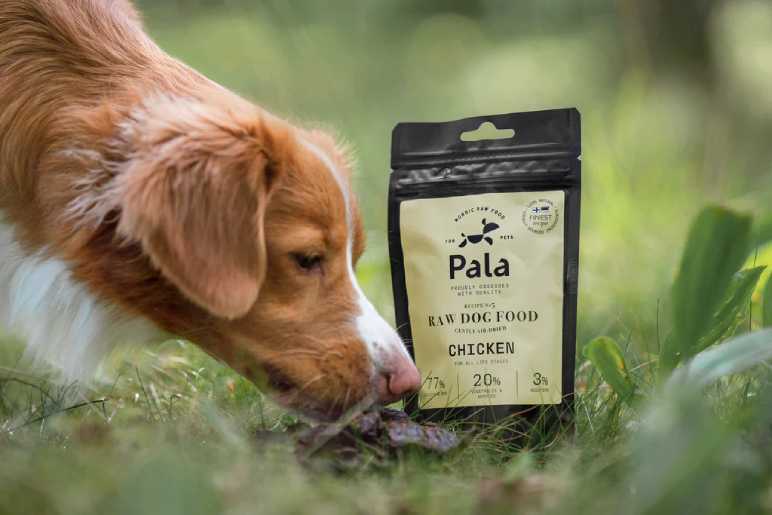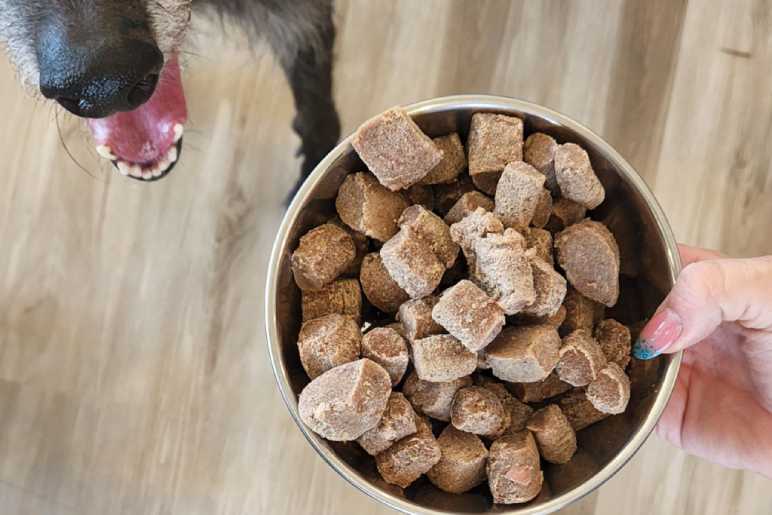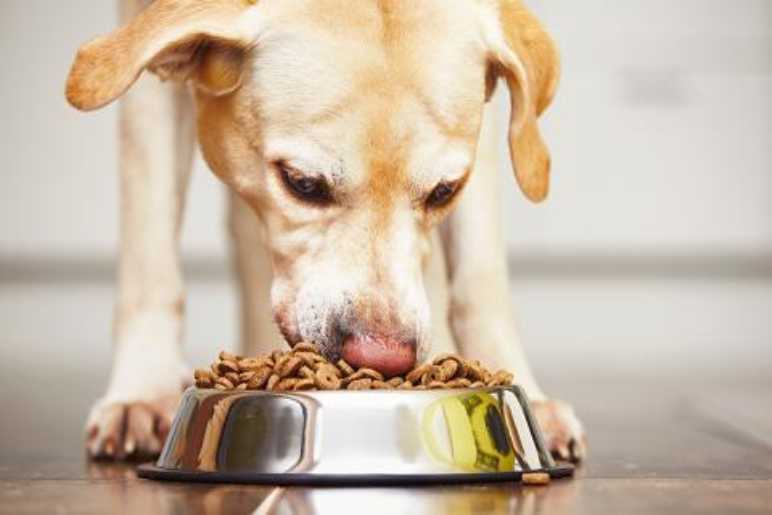As more pet owners explore options to give their dogs healthier and more natural diets, raw dog food is becoming an increasingly popular choice. The advantages of feeding your dog raw food range from improved digestion and a shinier coat to more balanced energy levels and better dental health. If you’re looking for raw dog food near you, this guide will walk you through the benefits of raw feeding, how to source the best raw dog food, and tips on transitioning your dog to this type of diet.
Why Choose Raw Dog Food?

Raw dog food is often designed to mimic the natural diet dogs would have eaten in the wild. It’s packed with raw meat, bones, vegetables, and sometimes organ meats, aiming to deliver essential nutrients without artificial additives or heavily processed ingredients. Many dog owners and trainers advocate for this diet, observing improvements in their pets’ health and behavior.
Key Benefits of Raw Feeding:
- Improved Digestion: Raw diets are usually easier on a dog’s stomach since they lack processed fillers and additives that can lead to indigestion or allergies.
- Healthier Skin and Coat: Nutrients from natural fats and oils in raw foods can enhance your dog’s coat, making it shinier and healthier.
- Increased Energy Levels: Dogs on raw diets often experience more stable energy levels due to the balanced macronutrients in their food.
- Better Dental Health: Raw bones can help clean teeth and reduce plaque buildup, promoting stronger gums and fresher breath.
Where to Find Quality Raw Dog Food Near Me

When searching for raw dog food options nearby, there are a few approaches you can take:
1. Local Pet Shops and Specialty Stores
Many local pet stores and specialty shops now stock raw dog food due to rising demand. These shops often carry reputable brands, with varieties tailored to different breeds, ages, and dietary requirements. Look for stores that prioritize quality and transparency, with ingredients sourced from local or organic suppliers whenever possible.
2. Online Raw Dog Food Suppliers
If you’re unable to find raw dog food locally, many online pet food suppliers offer fresh or frozen raw food that can be delivered to your doorstep. This convenience is especially useful if you need specific ingredients for your dog’s health needs. Popular brands often have online stores that provide direct shipping with cold packs to ensure freshness.
3. Local Butchers and Farmers’ Markets
Some pet owners prefer to prepare raw dog food themselves. Local butchers and farmers’ markets are excellent places to source fresh meats and bones for this purpose. Establishing a relationship with a local butcher can also give you access to cuts and organ meats that are otherwise hard to find.
4. Dog Trainers and Veterinarians’ Recommendations
Dog trainers, particularly those with experience in raw diets, can be a valuable resource for advice on where to find quality raw dog food near you. Trainers, such as those at Dog Trainer Liverpool, often have insight into local suppliers and may even offer nutrition guidance as part of their training services. Additionally, some veterinarians recommend specific brands or suppliers for pets with unique dietary requirements.
What to Look for in a Raw Dog Food Supplier

When choosing a raw dog food supplier, it’s important to consider the following factors:
- Ingredient Quality: High-quality raw dog food should include human-grade meats, fresh vegetables, and no artificial additives or fillers. Look for products with transparency in sourcing and ingredient lists.
- Processing and Storage: Freshness is crucial in raw diets, so suppliers should maintain a high standard for handling and storing their food. Frozen or refrigerated options are best to preserve nutrients.
- Variety and Customization: Some dogs have specific needs, whether it’s a particular protein or a certain blend of nutrients. A good supplier will offer a range of products to accommodate different diets, allergies, or preferences.
- Customer Reviews: Reading reviews can provide insight into the quality and reliability of a raw dog food supplier. Look for feedback on ingredient quality, freshness, and any notable improvements in pets’ health or behavior.
How to Transition Your Dog to a Raw Diet

Switching to a raw diet can be a big adjustment for your dog, so it’s important to do it gradually to avoid digestive upset. Here’s a general transition plan:
- Start Slowly: Begin by mixing a small amount of raw food with your dog’s current food. Over the course of 7-10 days, gradually increase the amount of raw food while decreasing the kibble or canned food.
- Monitor Health and Digestion: Watch for any signs of digestive upset, such as loose stools or gas, which can indicate a need to slow down the transition.
- Balance the Diet: A complete raw diet should include muscle meat, bones, organ meat, and vegetables. Avoid feeding exclusively one protein source to ensure your dog receives a balanced mix of nutrients.
Common Concerns and Misconceptions About Raw Feeding
1. Raw Food Poses a Bacterial Risk
While raw food may contain bacteria, healthy adult dogs have digestive systems that can handle it due to their naturally acidic stomachs. However, it’s still important to maintain proper food safety practices, like washing hands and using designated cutting boards, when preparing raw meals.
2. Raw Feeding is Too Expensive
It’s true that raw feeding can be more costly than traditional kibble, but the benefits often justify the expense. Many dog owners find that their pets need fewer vet visits and have fewer health issues, which can offset the upfront cost of raw food.
3. Feeding Raw is Time-Consuming
Some owners worry about the preparation involved in feeding raw food. While homemade raw diets can require some effort, many commercial raw dog food options are as convenient as traditional pet food and come in pre-packaged, easy-to-serve portions.
Real-Life Success Stories with Raw Feeding
Many dog owners report that their pets have experienced transformative health benefits after switching to raw diets. Dogs that suffered from chronic skin conditions, digestive issues, or lethargy often show improvement within weeks of making the change.
A raw diet can also be a great way to enhance training results, as a healthier, more energetic dog is often more receptive to learning new commands. For example, professionals at Dog Trainer Liverpool have observed that dogs on balanced raw diets often have more focus and stamina, which can significantly improve training outcomes.
Conclusion
Making the decision to feed your dog a raw diet is a commitment to their health and well-being. While it requires research and sourcing high-quality ingredients, the rewards are well worth the effort. From shinier coats to improved digestion, the benefits of raw feeding have made it a popular choice among pet owners and trainers alike.
If you’re wondering where to start, search for local suppliers of raw dog food near you, consult with professionals, and remember to monitor your dog’s health closely throughout the transition. With the right raw food, you’ll likely see a healthier, happier, and more vibrant dog.
Have A Look :-
